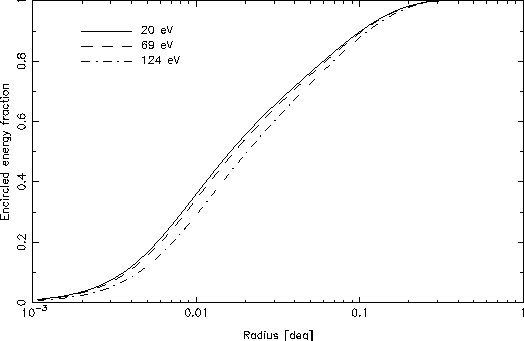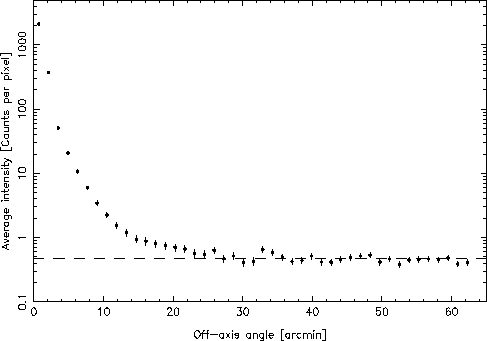| About ROSAT |
ROSAT Home Page | ROSAT Images |
|---|
The reflectivity of the mirror assembly decreases with increasing
off-axis angle, dropping linearly to 67% of its on-axis value at
![]() off-axis.
Beyond this the vignetting function is dominated by geometric baffling.
Rejection of scattered flux from bright sources outside the
field of view is good.
Less than 0.5% and 0.01% of the source flux is detected for
sources
off-axis.
Beyond this the vignetting function is dominated by geometric baffling.
Rejection of scattered flux from bright sources outside the
field of view is good.
Less than 0.5% and 0.01% of the source flux is detected for
sources ![]() off-axis and
off-axis and ![]() off-axis respectively.
off-axis respectively.
In addition to the vignetting intrinsic to the mirror assembly, the quantum efficiency of the WFC microchannel plate detectors vary as a function of position of a source within the field of view, probably due to variations in the quantum efficiency of the CsI coating deposited on the face of the MCP. This effect has been calibrated using the survey observation of the bright white dwarf HZ 43 by binning the source photons into detector coordinates. Figure 6.5 shows the combined effects of the spatial variations in the detector efficiency and the mirror vignetting.

Figure 6.6: On-axis encircled energy function as measured at energies of
20, 69 and ![]() .
.

Figure 6.7: In-orbit WFC encircled energy function as measured on-axis
and at ![]() and
and ![]() off-axis (
off-axis ( ![]() ).
).

Figure 6.8: Radial response profile derived from an on-axis observation
of the bright white dwarf HZ 43 during the Performance Verification
phase of the mission. The exposure time is ![]() ,
and the S2B filter was used for the observation. The dashed
line shows the level of the background in the observation.
,
and the S2B filter was used for the observation. The dashed
line shows the level of the background in the observation.